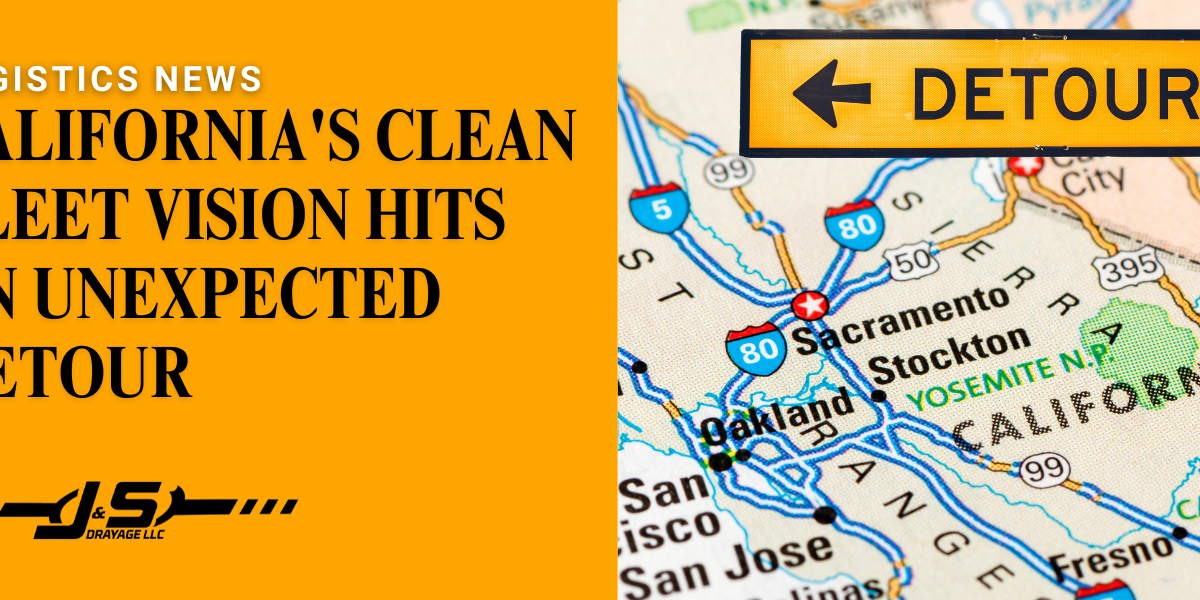By Darrion Weems Chief Executive Officer, J&S Drayage January 15, 2025
In a development that has sent ripples through both environmental and transportation policy circles, California’s ambitious Advanced Clean Fleets (ACF) rule has encountered an unexpected institutional roadblock. The story that unfolds reveals much about the delicate interplay between state environmental leadership and federal oversight in American governance.
The Letter That Changed Everything
On January 15, 2025, in what can only be described as a watershed moment for environmental regulation, Steven Cliff, executive officer of the California Air Resources Board (CARB), penned a brief but consequential letter to EPA Acting Administrator Jane Nishida. Its contents were simple yet profound: California was withdrawing its request for a federal waiver to implement the ACF rule. The EPA’s swift response the following day, declaring the matter “closed,” marked the end of a chapter in California’s environmental leadership—at least for now.
From Confidence to Recalibration
The trajectory of this policy shift is particularly fascinating. When CARB first unveiled the ACF rule, its stance reflected California’s traditional environmental boldness—they initially asserted no federal waiver was necessary. This position, however, proved difficult to maintain in the face of legal challenges, particularly from the California Trucking Association.
What makes this case study particularly compelling is CARB Chair Liane Randolph’s candid acknowledgment of political realities. “Frankly,” she noted, “given that the Trump administration has not been publicly supportive of some of the strategies that we have deployed in these regulations, we thought it would be prudent to pull back and consider our options.” This statement offers a rare glimpse into the real-world constraints that shape environmental policy implementation.
The Broader Context
This development gains additional significance when viewed against California’s historical success in securing EPA waivers. The state’s previous triumph in obtaining a waiver for the Advanced Clean Trucks rule in March 2023 had set a precedent that many expected would smooth the path for ACF. The departure from this pattern suggests a deeper shift in the regulatory landscape.
Immediate Implications and Stakeholder Responses
The practical implications of this policy shift are immediate and far-reaching. The requirement that only zero-emission vehicles could join the state’s drayage registry starting January 1, 2024, now sits in regulatory limbo. The Western States Trucking Association’s response—celebrating the development while citing recent wildfire crises and infrastructure challenges—highlights the complex interplay between environmental aspirations and operational realities.
Their statement that “This was not the time to try and push through a rule designed to transform the industry… especially considering many of the burn areas have been without electricity for at least a week” raises legitimate questions about the timing and practicality of zero-emission mandates in crisis-prone regions.
Lessons in Policy Design and Implementation
This episode offers several crucial insights for environmental policy design:
1.The importance of building resilient regulatory frameworks that can withstand political transitions
2.The need to balance ambitious environmental goals with practical implementation challenges
3.The critical role of timing and context in policy rollout
4.The value of maintaining flexibility in regulatory approaches while pursuing environmental objectives
Looking Forward: A New Framework for Environmental Leadership
Rather than viewing this as a simple setback, we might consider it an opportunity to reimagine how ambitious environmental policies can be structured to survive political transitions. The ACF experience suggests that successful environmental initiatives may need to:
• Build broader coalitions of support across political spectrums
• Incorporate more flexible implementation timelines
• Account for infrastructure readiness and emergency scenarios
• Develop multiple pathways to achieve environmental goals
The Path Forward
As we process this significant shift in California’s environmental policy landscape, the key question becomes not whether to pursue ambitious environmental goals, but how to structure them in ways that are both politically resilient and practically achievable. The ACF saga may well serve as a crucial lesson in the art of the possible in environmental policy-making.

